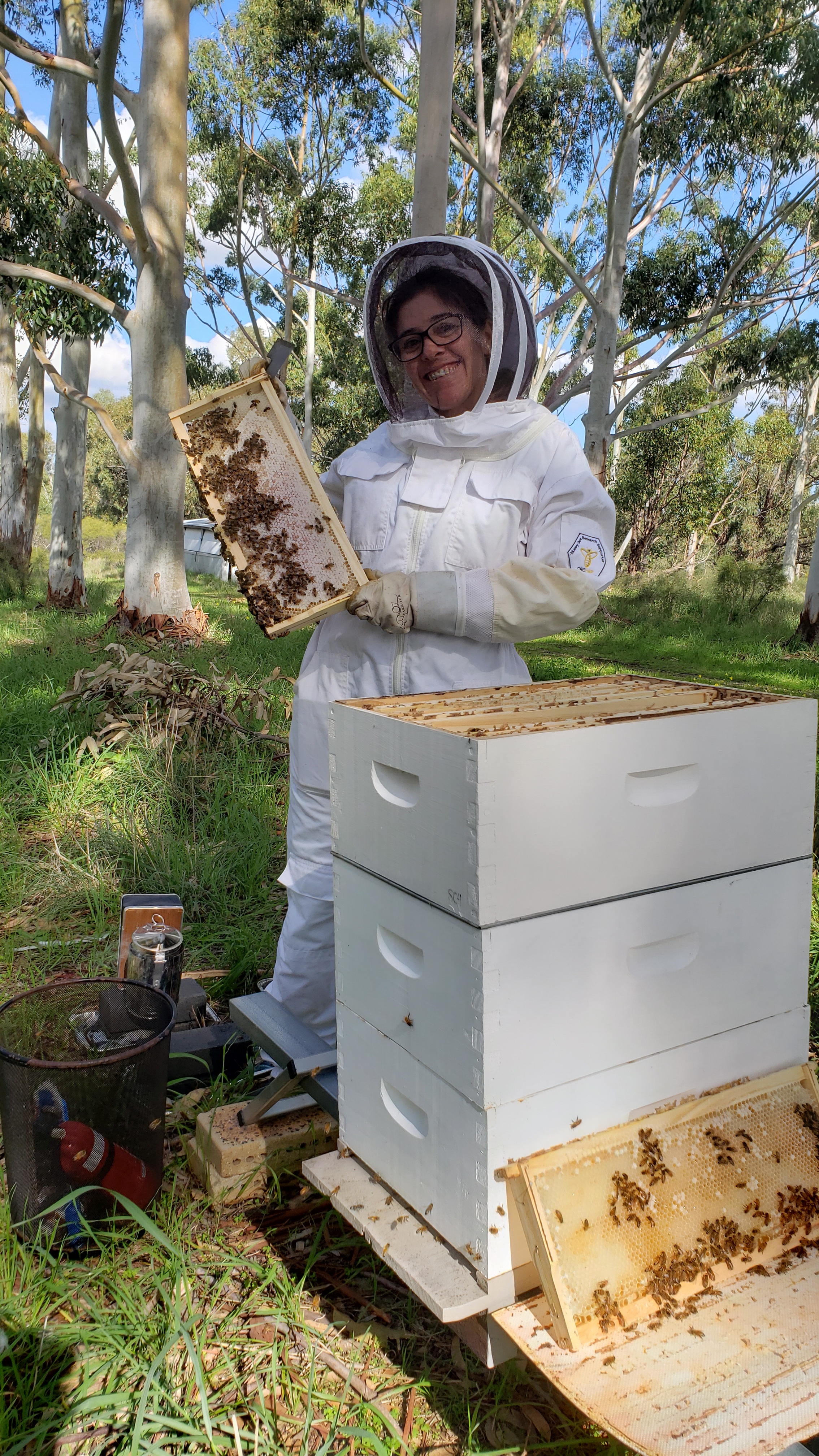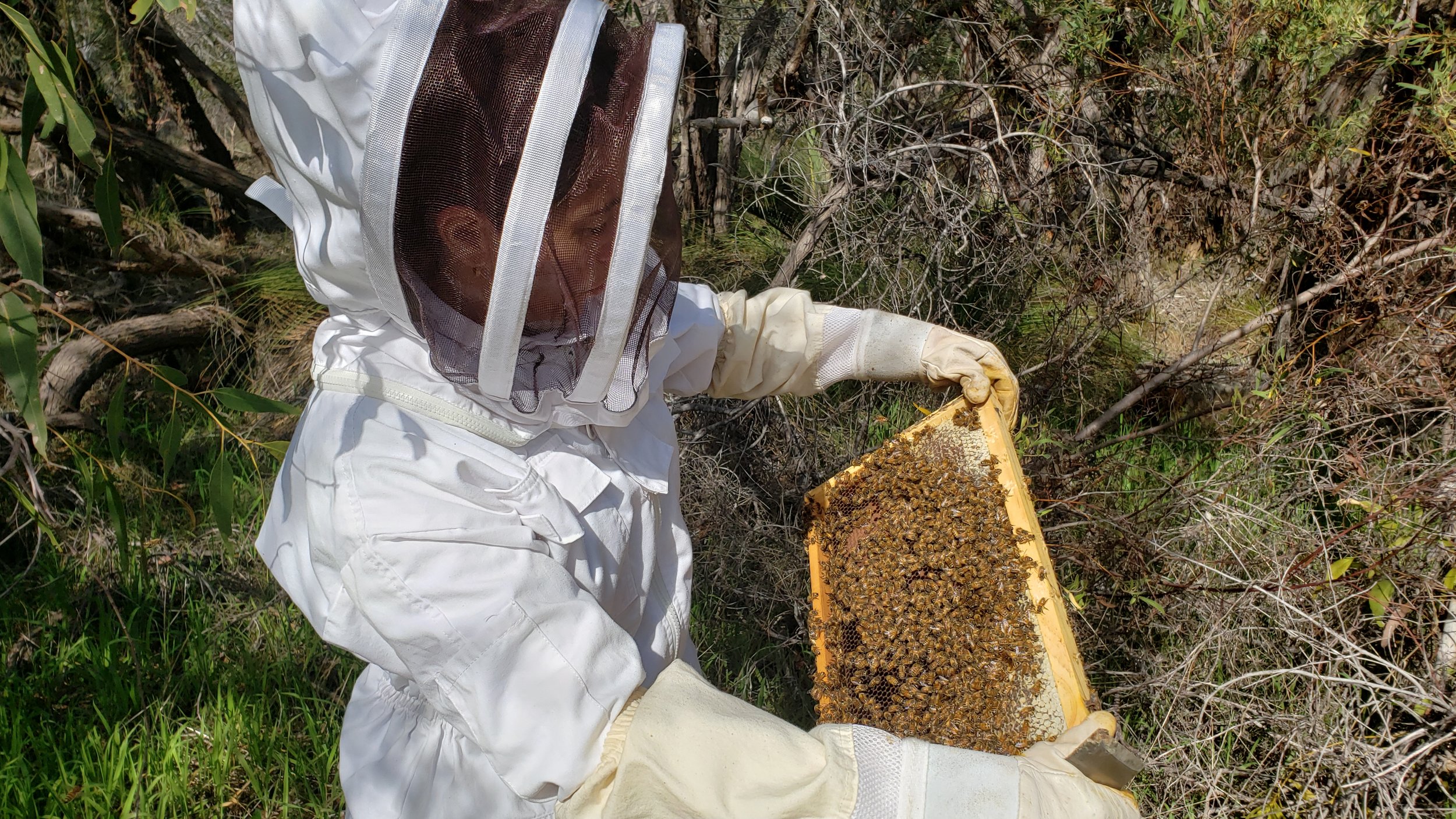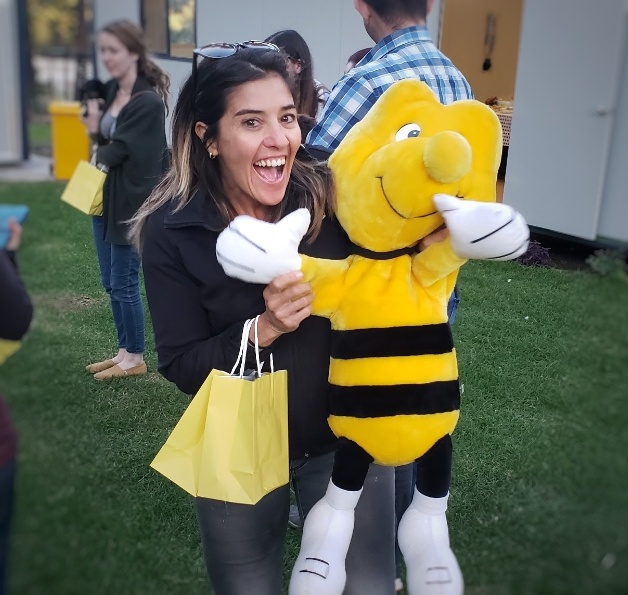Interview with a Beekeeper
To celebrate World Beekeeping Day, and because I love honey and bees, I connected with Australian beekeeper Daniela Boksjo (Dani) who agreed to be interviewed about her work as a beekeeper. Here she talks about her life as a beekeeper, and gives tips about how to be a responsible honey consumer.
On to the questions!
1. Tell me about yourself and how you started out beekeeping?
My name is Daniela, I'm originally from Brazil living in Australia for the last 16 years. When I was 19 years old watching Fried Green Tomatoes, the scene of Idgie Threadgoode sticking her hand into a wild beehive to get some fresh honey really impressed me and I " unconsciously" became a beekeeper then. Moving to Yanchep I came across some local newspaper articles saying this location is destined to become the biggest research centre of beekeeping activities in the world, caught my interest. I started beekeeping May 2018, just helping a local beekeeper with his harvesting. Caught some swarms myself and started my own beehives. I've studied beekeeping in September 2018, and my group and I were the first beekeepers in Western Australia to hold a Certificate III in beekeeping [which is a nationally recognised and accredited course.]
Dani teaching her beekeeping workshop.
2. What is a typical day like as a beekeeper? Does it change seasonally?
It all depends how many beehives you have to manage. As I currently have only 5 beehives I'm working more on product development (honey bee products) together with the CRC in Yanchep http://www.crchoneybeeproducts.com/. The honey harvest is normally between September and May and off for winter months ( june- end of August) in South - West Australia. It's different for other areas.
3. What would be the pros and cons of keeping bees? Do you ever get stung?
In my opinion there aren't any cons of keeping bees as the main importance is helping the pollination. Yes beekeepers get stung all the time. I always wear protection (PPE) and carry antihistamines and EpiPen as precaution.
4. What type of bees do you keep?
I keep European Bees ( Apis mellifera) but also have some bee hotels for the beautiful Australian Native bees, so important for our pollination. My favourite Australian native bee is the "Blue Banded bee" Amegilla cingulata , a real beauty!!
5. Do bees ever get harmed in the apiary and connected to this, what would be good practice in terms of how the bees are treated?
Yes unfortunately sometimes some bees get injured, especially during trips if they have to be moved around a lot. Moving bees is very disruptive for their work. I personally don't move my bees around, but commercial beekeepers that rely on honey harvest have to move them quite a few times a year and that's quite unfortunate for the bees.
“These pics are from my latest beehive inspection out in the Australian bush. These are taken in an area called " The Banksia Woodlands" .”
6. What advice would you give to people who want to keep bees?
Beekeeping has to be about the bees and not humans. As a beekeeper it is your responsibility to care for the welfare of your bees and do the best you can to make sure they thrive. The most important aspect of beekeeping is helping the bee health and support pollination. Honey is a secondary activity.
7. Finally, as environmentally conscious consumers of honey, is there anything we should be mindful of when buying honey?
This is a great question. In my opinion the best way to purchase honey is to go as local as you can. Visiting an apiary is a good idea. Checking that the beekeeper is registered and trained in disease management is also important.
Honey is also a bit like wine, some regions are better than others in terms is quality and microbial activity. Some honeys are more active than others therefore more expensive.
Also it depends what the customer preference. My backyard honey is a coastal honey, it's a bit "orangey and tangy" and my other honey is from the Banksia Woodlands and tastes like caramel mixed with bananas and it's delicious! Both are very popular and people are divided in their opinions when they try.
I wouldn't use Manuka or Jarrah honey to put on top of my cereal, for example, as they cost a lot because of their antibacterial activity. Also in my opinion Manuka honey doesn't taste nice, but is used in cosmetics or medication, same for Jarrah ( tastes amazing though.)
Every honey is supposed to have a certain antibacterial activity, but some are higher than others.
Dani has a Bachelor of Science degree in Food Science, but has been working as a personal trainer since 2008 www.bodyup.com.au. She is a registered beekeeper in Western Australia and runs workshops in Beekeeping for beginners. You can contact her through her website: www.yanchephoney.com.au.







